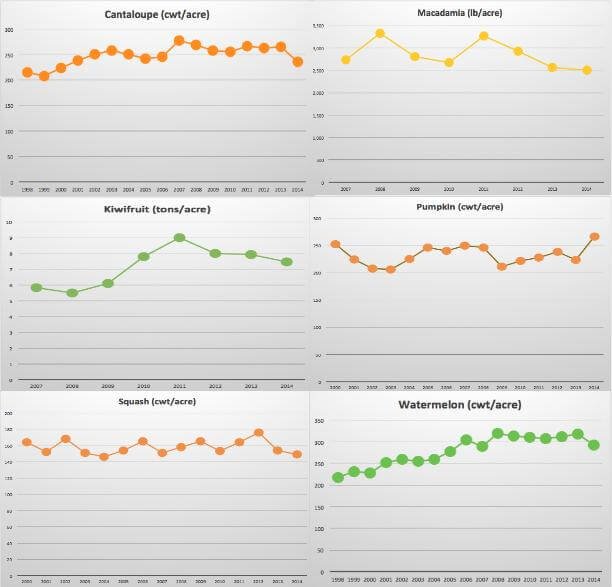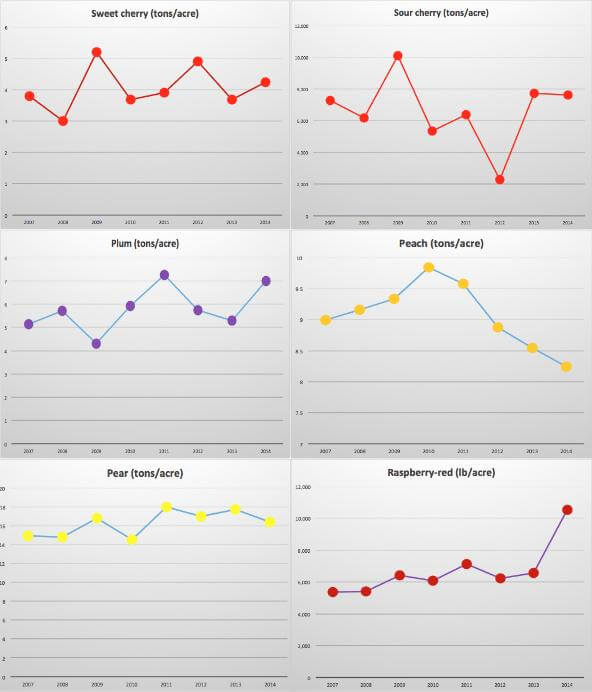In a dramatic 2013 cover story, Time warned of “A World Without Bees,” subtitled “The price we’ll pay if we don’t figure out what’s killing the honeybee.” Its author argued that the class of agricultural pesticides know as neonicotinoids was killing the honeybee and that the planet would starve unless we banned these chemicals immediately. He said this because “1 in every 3 mouthfuls you’ll eat today,” depends on bee pollination. In short: no bees, no food.
The GLP examined that one-in-three myth in a previous article. It documents that soon after the Time article appeared, emerging facts about the health of the global bee population were changing our understanding about pollinators and food. The data showed recent growth, and not a decline, in the number of commercial hives throughout the United States and the world.
Since neonicotinoids came into widespread use in American agriculture, commercial honeybee numbers have held steady at the level of 2.4 to 2.6 million hives, recently reaching a 20-year high of 2.7 million.
Wild bees pivot
As the empirical data underscoring the fact that world farming is not facing a beemageddon has strengthened, anti-pesticide activists have attempted to shift public focus away from commercial bees, which are more than holding their own, to wild bees. It’s an issue that resonates with concerned citizens: because our food supply is so dependent on bee pollination, by the activists’ own admission, the disappearance of wild bees would necessarily have an impact on our crop production. No wild bees, no food. This transfigured narrative also offers its purveyors a unique ideological benefit: there are no reliable counts for wild bees populations, so any claim of imminent danger can stand unchallenged by the facts.
But that narrative does not survive scrutiny either. In a study published in June in Nature Communications, 58 scientists from around the world found that the vast majority of wild bee species that they examined are prospering.
Activists insist wild bees are being killed by neonicotinoid insecticides. But as the research paper notes: “[T]he species that are the dominant crop pollinators are the most widespread and abundant species in agricultural landscapes in general.” The variety of wild species that forage on commercial crops is limited, but in terms of population, those species are everywhere. They are by far the most commonly encountered type of wild bee. The study found that, in 99.7 percent of the cases, the wild bees that come into contact with crops (and neonics) are not in decline.
“Threatened species are rarely observed on crops,” they conclude. So why would banning pesticides help preserve any particular wild bee species or wild bees in general? There is no generalized wild bee problem; there are some wild bees that are not fairing as well as others, and those species are not linked, directly or indirectly, to neonics or any particular pesticide. A solution to a wild bee problem depends on the particular species of concern. There’s no one-size-fits-all fix.
In many cases a particular species faces hard times because it’s being pushed out of its preferred habitat by changing land use patterns. If a new housing development goes up and kicks a particular type of bumblebee out of its home, another species might move in. It has nothing to do with chemicals sprayed on crops that they never even visit.
A team of entomologists, writing in 2012 in the Proceedings of the National Academy of Sciences, explained how this situation plays out in the real world. The authors found some declines in a few species of bumblebee, which scientists sometimes refer to as Bombus, the genus of bumblebee. They pointed out that it’s an exaggeration to look at the decline of one type of bee and jump to the conclusion that wild bees in general are dying off.
Environmental change affects species differentially, creating “losers” that decline with increased human activity, but also “winners” that thrive in human-altered environments. … Thus, the existence of a widespread crisis in pollinator declines, as often portrayed in the media and elsewhere, rests on data of limited taxonomic or geographic scope.
The team tried to remedy the situation by taking a closer look at a species-by-species level. Again, there was no reason for alarm.
Of 187 native species analyzed individually, only three declined steeply, all of these in the genus Bombus.
In fact, the problems of those few wild bumblebee species may in fact be caused by commercial beekeepers introducing deadly diseases.
Furthermore, Bombus may not be representative of the world’s 442 other bee genera because they may have been impacted by recent pathogen introductions from managed Bombus colonies.
For example, the introduction of the nosema parasite was thought to have wiped out the rusty-patched bumblebee, which hadn’t been seen on the East coast since 2009 and was presumed extinct. The bee recently made a comeback, having been spotted in a Virginia park about 50 miles from Washington, D.C.

The situation is much the same in Europe. According to the best available studies, certain species of bumblebees that saw declines in the 1990s have rebounded in the past few years. At the same time, the species richness of other wild bees has increased significantly.In other words, nature tends to reach an equilibrium.
Some species of wild pollinators face challenges and must fight for their survival, which just happens to be true of all wild animals and insects. With respect to wild bees, however, the best available scientific evidence suggests that these creatures are extremely resilient.
Wild bees and agricultural productivity
There is some clarifying data on wild bee populations and agricultural productivity. The USDA keeps detailed statistics on all the most important crops pollinated by bees. Many factors can affect a crop’s output, particularly the weather, but it’s clear that yields are not decreasing and bee-pollinated crops have not fallen upon hard times.

Crops in which bee pollination is essential
The lone exception is the peach, where bee pollination is important but not essential, which has seen declines in yield. But USDA’s explanation of the situation has nothing to do with bees:
The California peach crop, accounting for 74 percent of the United States utilized peach production, is down 5 percent from 2013… Growers reported the drought situation remained a concern, however many of them were able to offset reduced irrigation district water deliveries by utilizing wells to pump groundwater.
California fields have been parched for the past four years, but even a record-breaking drought hasn’t been enough to depress productivity. Since the beginning of the supposed bee crisis that began with Colony Collapse Disorder in 2006, farm productivity in the US has actually increased among America’s bee-pollinated crops. Agriculture Secretary Tom Vilsack:
Republished with permission from Genetic Literacy Project, which explores the intersection of DNA research, media and policy to disentangle science from ideology. Read the original here.In the six years I have been secretary, we have seen a vigorous expansion of our agricultural sector. As much as an enterprise dependent on the forces of nature can be described as robust, American agriculture is robust and growing. Farms are more productive today than ever before.







Comments